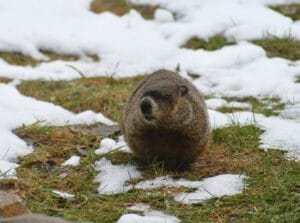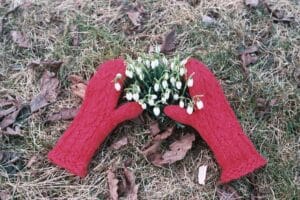Hello fellow readers, As I write, the snow is falling and is likely to continue well into Groundhog Day. They say if the groundhog sees his shadow, they’ll be six more weeks of winter. If he doesn’t, it will be an early spring. With all this snow, it may be six weeks before we see the ground! I’ve often wondered about the history of Groundhog Day, haven’t you? And so, I asked Mary :^).
The history of Groundhog Day stems back thousands of years.
Officially, the first Groundhog Day celebration took place on February 2, 1887, in Punxsutawney, Pennsylvania. But one could say Groundhog Day stems back thousands of years when, in the portion of Europe now Germany, badgers were thought to anticipate the coming of spring, indicating when farmers should plant crops. When Germans immigrated to America and established themselves in Pennsylvania, where badgers aren’t plentiful, groundhogs became the go-to.
Groundhog Day is the midpoint between seasons.
It hadn’t occurred to me that Groundhog Day, always February 2nd, is typically the midpoint of the first day of winter, the winter solstice, and the first day of spring, the spring equinox. And it’s halfway between the summer solstice and autumnal equinox in the Southern Hemisphere.
Groundhogs (Marmota monax), also called woodchucks, live two to three years on average but can live up to six years in the wild. Those in captivity can live longer. But according to the Punxsutawney Groundhog Club, Phil has extraordinary powers. He continues to live since his first spring prediction in 1886 thanks to a secret “elixir of life” he sips every summer to give him seven more years.
(Notice the club’s reporting of Phils’s first spring prediction is a year before the “official” year. The Punxsutawney Spirit newspaper reported news of a Groundhog Day in 1886: “up to the time of going to press, the beast has not seen its shadow.” However, it was the following year that the annual celebration became “official.”)
Punxsutawney Phil is not the only one.
There are other groundhogs besides the Phil. Sam of Nova Scotia Canada and Beau (short for General Beauregard Lee) of the National Weather Service near Atlanta are two popular fellas. Perhaps the most famous next to Punxsutawney Phil is Chuck at the Staten Island Zoo. Maybe when Chuck bit Mayor Bloomberg in the 2009 festivities is when he came to fame. Or was it when Mayor de Blasio dropped “Chuck” in 2014. “Chuck” was a stand-in named Charlotte, who died a few days later. It seems the tradition of mayoral participation of Groundhog Day at the Staten Island Zoo hasn’t happened since.
I think the University of Dallas has the right idea to keep everyone safe. They don’t have a groundhog making predictions. Instead, Groundhog Day is an official school holiday and has been for over fifty years. It is considered the second-largest celebration to the one in Punxsutawney, PA.
Groundhog Day is also Candlemas Day.
There’s a Christian Holiday also on February 2nd. Candlemas celebrates the first bringing of baby Jesus to the Temple of Jerusalem to welcome him into Judaism. It also marks the Virgin Mary’s purification. Traditions of blessing candles symbolizing Jesus Christ being the Light of the World continue, especially among Roman Catholic, Orthodox, Methodist, Episcopalian, and Lutheran religions.
Snowdrops (Galanthus), those lovely little nodding white flowers that magically emerge through the last layer of winter’s frosting, are also known as Candlemas Bells, representing Jesus bringing hope to the world.
Groundhog Day now signifies repetitiveness.
Of course, we know about the famous movie Groundhog Day (1993), which gave a new significance to the words as something that endlessly repeats. One of the exciting repetitive tasks in anticipation of spring is purchasing seeds. This year, early shopping is best as more have gotten into the joy of digging in the dirt.
Already, popular non-GMO and organic online sources are out of stock on the most sought out seeds. No hoarding seeds, though. Unlike toilet paper, they have a shelf life. Besides, most seed packs have more in them than you need. So, share them graciously. Seeds, like spring, represent the promise of new beginnings. And by sharing the promise, you’ll be spreading hope.
Garden Dilemmas? AskMaryStone@gmail.com (and now on your favorite Podcast App.)
You’ll enjoy a previous column, the Accuracy of Groundhog Day.
And a column featuring Snowdrops.





